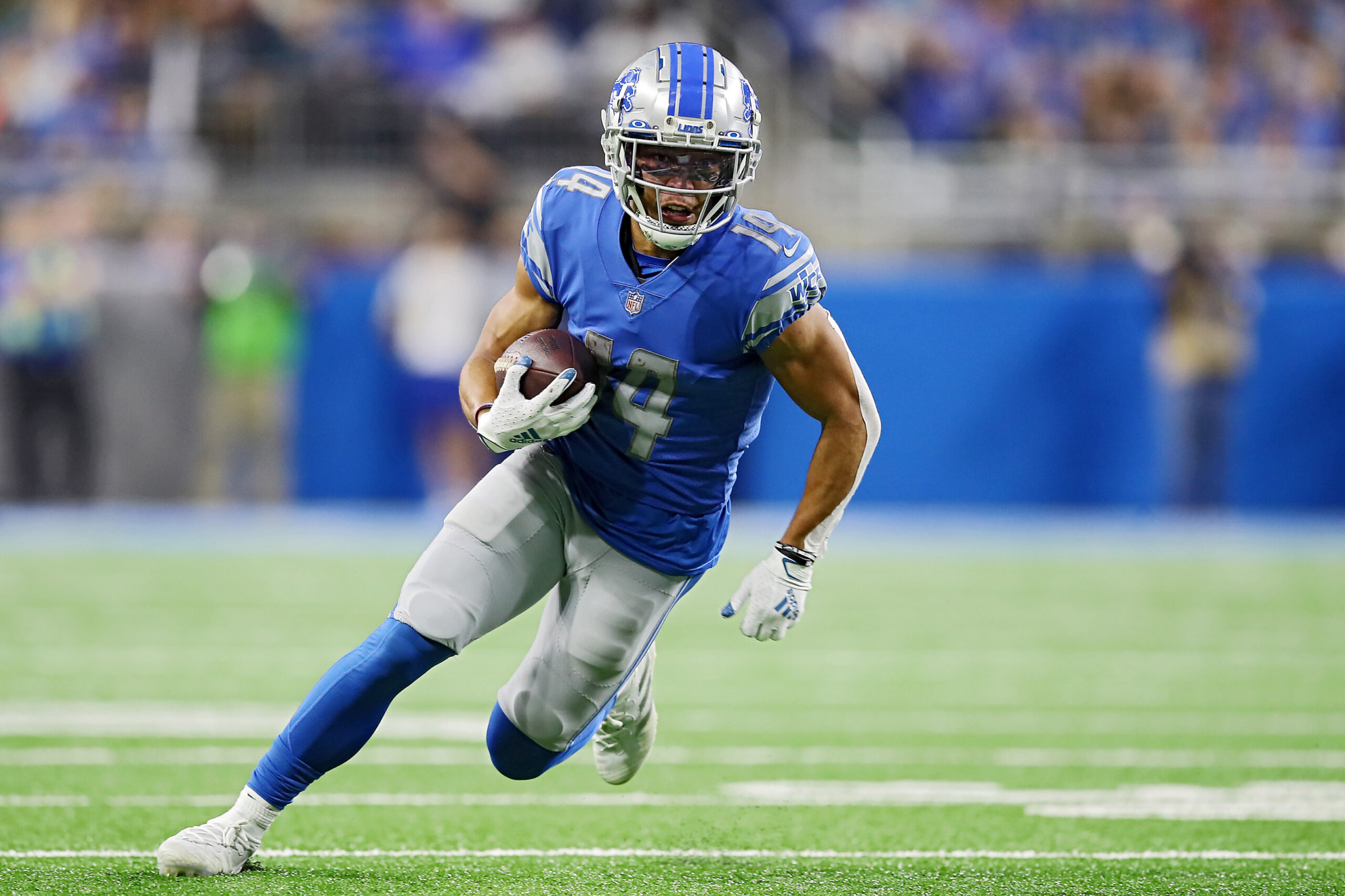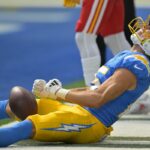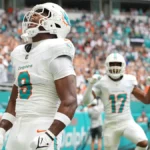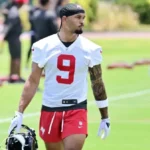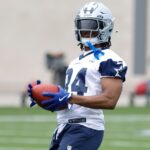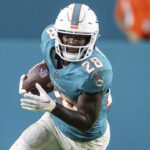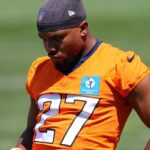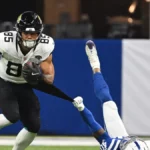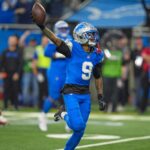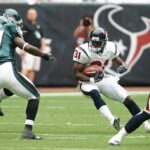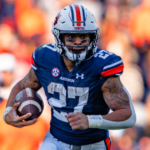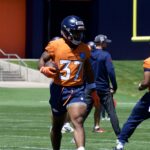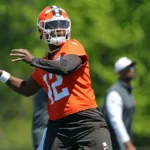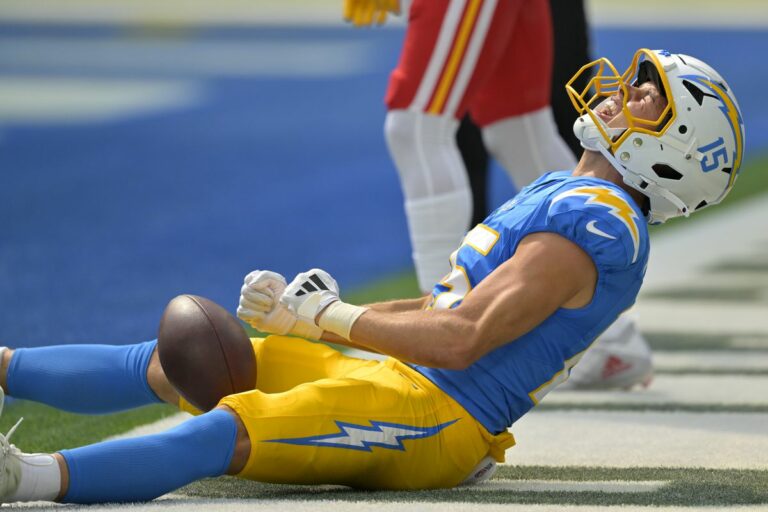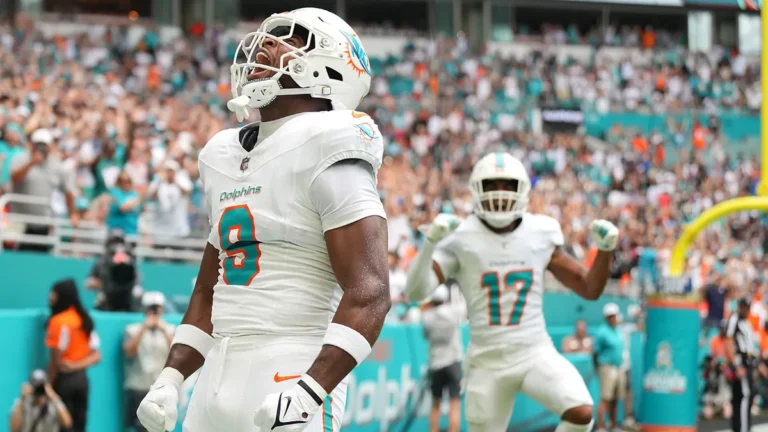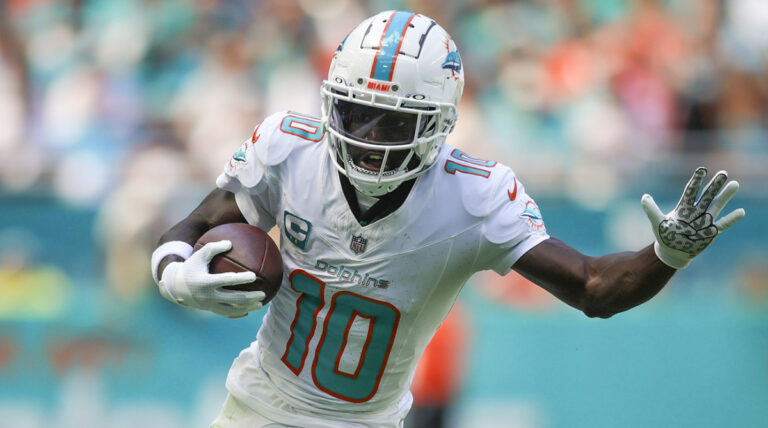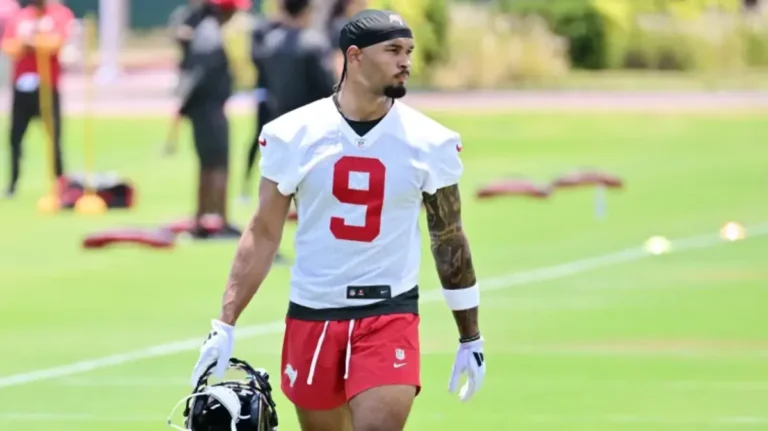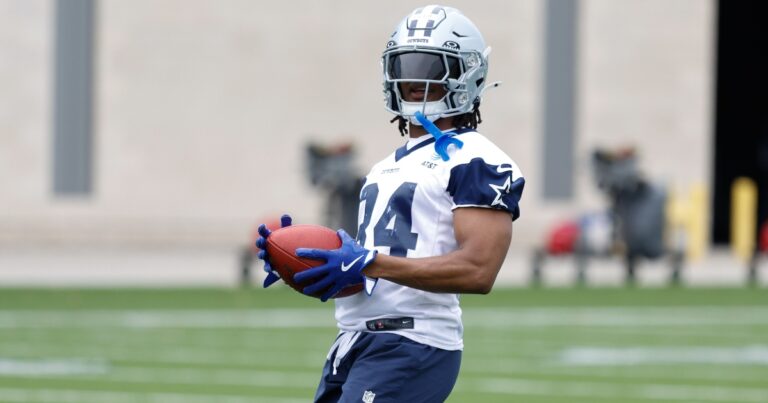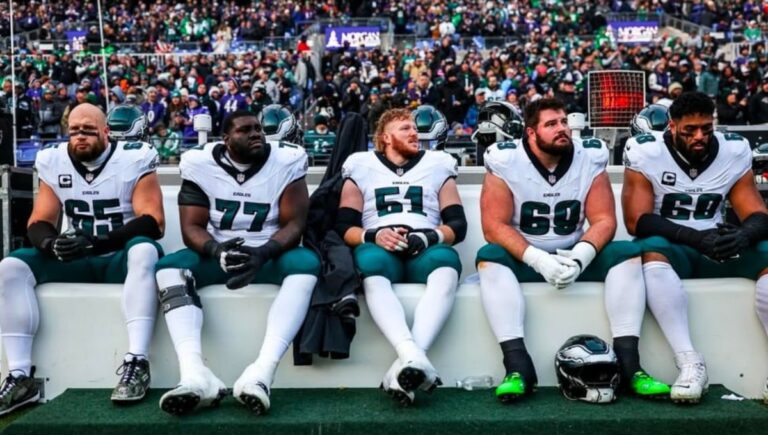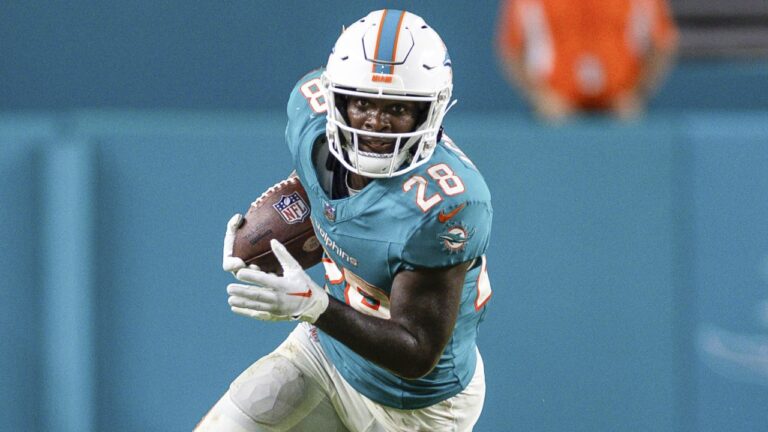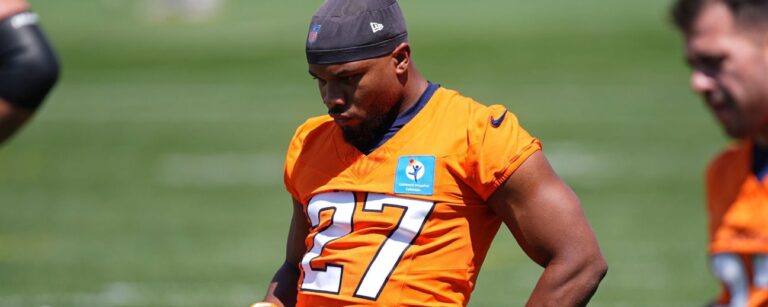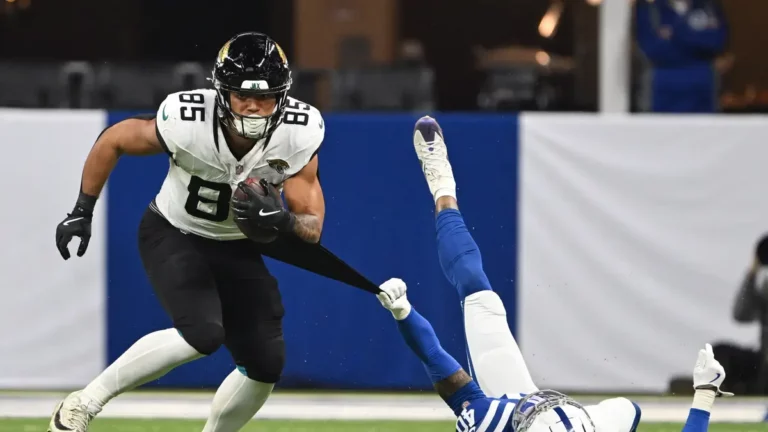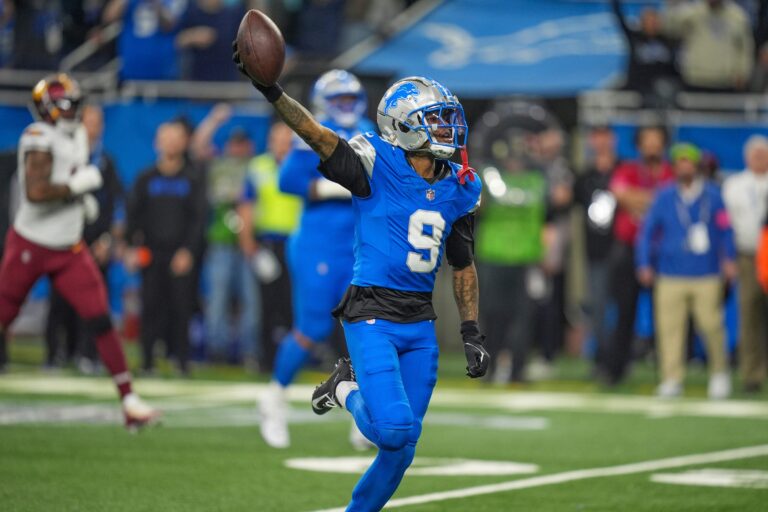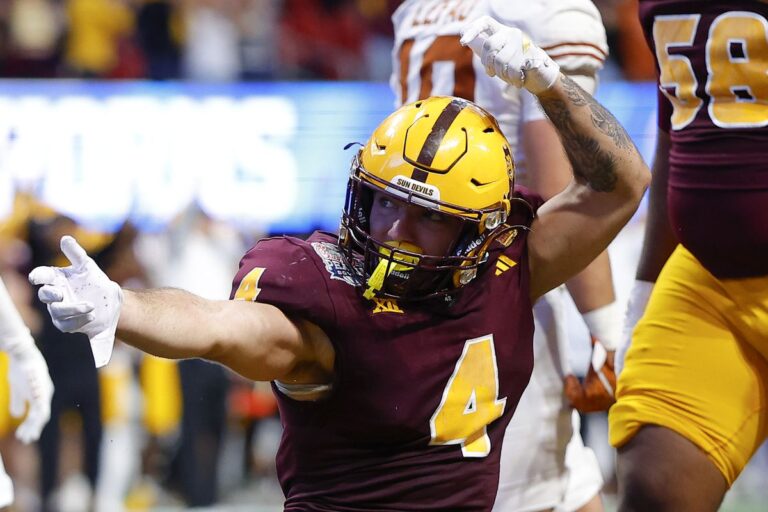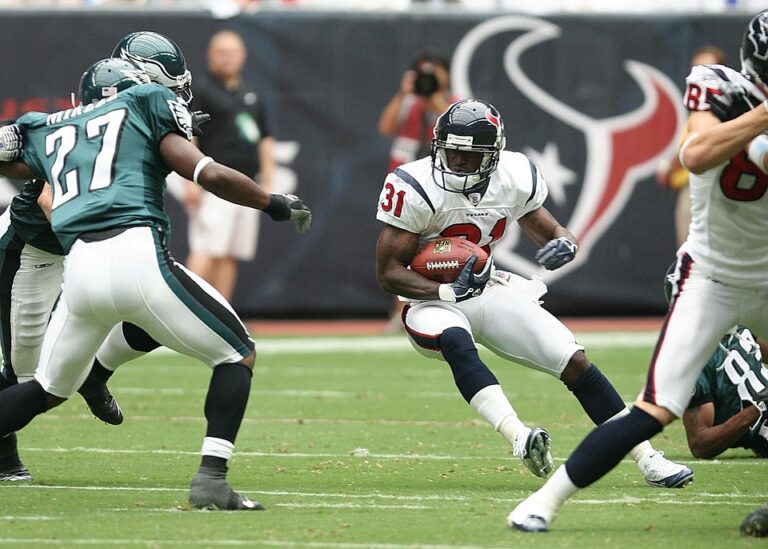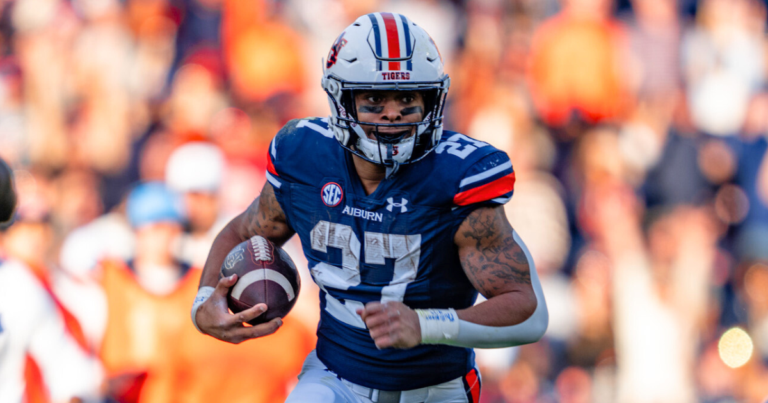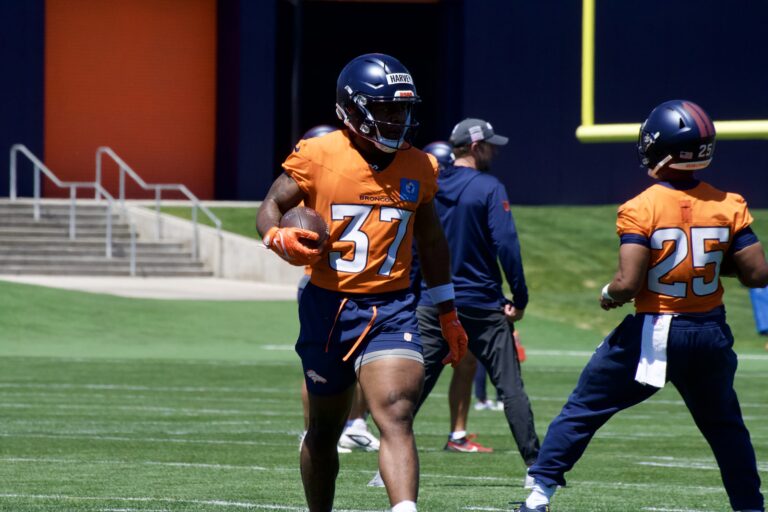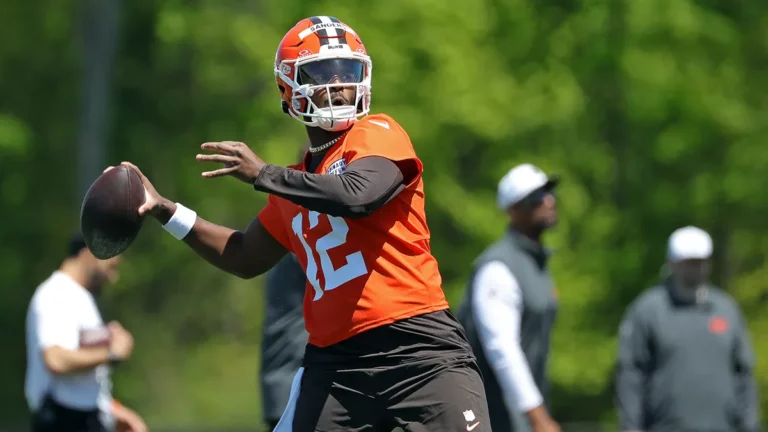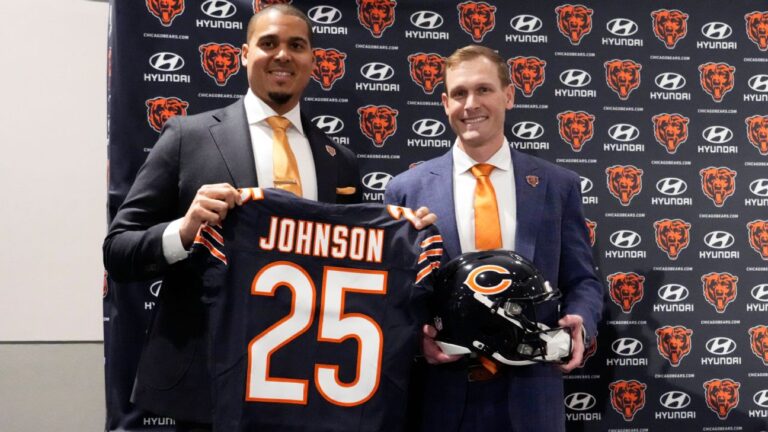Summary:
–Prioritize Week 17 Optimization: Week 17 is where nearly ALL of the big money is for 2024 Fantasy Football Best Ball Tournaments like Underdog’s Best Ball Mania. Knowing these matchups, and drafting with them in mind, is crucial.
-Implement Team and Game Stacking: Utilize team stacking (pairing a quarterback with multiple offensive players from the same team) and game stacking (including players from both teams in a high-scoring matchup). This strategy increases the likelihood of high fantasy scores.
–Find Players with Back-Weighted Production: In order to win these tournaments, our rosters must be peaking during the fantasy playoffs. We can do this by drafting studs (obviously) who will perform throughout the season. But we must also find players who will perform at their best towards the end of the year. Historically, these players have been rookies and players who started the year as backups but eventually surpassed the starter to earn a full-time role (whether due to injury or outplaying him).
–Strategic Drafting and ADP Considerations: While reaching beyond Average Draft Position (ADP) to complete game-stacks is acceptable, especially in later rounds, avoid excessive early-round reaches. Balancing stack completion with maintaining overall draft value is essential for building a competitive lineup.

Why Week 17 (and Week 16) are All That Matters
Whether you are a Best Ball veteran or just getting into the game, you have likely heard the phrase, “Week 17 is all that matters.” While this may seem like a bit of an overstatement, it should be taken seriously.
Without getting too deep into the weeds, this statement is true because the vast majority of the prizes (66%) for Best Ball tournaments are tied up in the finals of the tournament (Week 17). At the end of the day, we are playing these tournaments to make money and finish in first.
Take a look at this chart provided by Michael Dubner of RotoViz regarding ticket values in Underdog Fantasy’s Best Ball Mania V (BBMV).

Immediately after a team is drafted, that team has an average value of $22.30. Meanwhile, a team that makes the BBMV finals in Week 17 has an average value of a staggering $18,500. So creating a roster that will both get to and then perform best in Week 17 makes the most sense.
However, Underdog has made major changes to the payout structure of Best Ball Mania V compared to last year. There are no more regular season payouts, and the earnings are much flatter compared to previous Best Ball Mania tournaments. Now, 20 people will make six-figures, while the minimum reward for making the finals is $3750 (compared to just $1,000 last year). Dubner again illustrates the prize structure perfectly:

As such, Week 16 has gained increased importance. The great Peter Overzet breaks this down in phenomenal detail here:

Overzet concludes (which I agree with) that optimizing your lineup for Week 17 is still the best strategy. But placing some focus on Week 16 should be in the back of your mind, given the new payout structure.
Just making it to the finals carries significantly more financial upside than previous years. Thus, Week 16 has gained significant “expected value,” even though constructing a roster with the best shot at winning the whole tournament still should remain the top priority. Nonetheless, any additional optimization for Week 16 cannot hurt, especially since it directly carries over into your Week 17 expected value, as Mike Leone notes:
@2Hats1Mike put it to me like this:
— pete overzet (@peteroverzet) May 10, 2024
"when you increase your odds of winning Week 16 by 10%, you basically increase your odds of winning week 17 by 10% while simultaneously having already banked the bump in prizes going from week 16 to week 17"
Best Ball Strategy: How to Optimize Lineups for Week 16 and Week 17
In order to make the most money possible, we know that we should optimize our lineups to perform best in Week 17 primarily, while considering Week 16 to an increased degree this year. But how do we do this?
Let’s dive into the general principles, best practices, and top strategies.
Note: If you want an in-depth look at these principles and the data that confirms their success, check out the Best Ball Manifesto by Mike Leone of Establish the Run.
Best Ball Strategy Number One: Team Stacking
Team stacking is the concept of pairing a quarterback and with 1-3 other players on that offense. For example, a roster with Dak Prescott, CeeDee Lamb, and Jake Ferguson would be a Dallas Cowboys team stack. This can be done for any team, but the Cowboys will be utilized as an example throughout this article. They were the number one scoring offense in 2023 (30+ points per game), making them a juicy team to load up on.
In BBMV drafts you end up with a roster of 18 players. It is incredibly difficult to find a roster of 18 individual, uncorrelated players that will each perform well in Week 17. This is the betting equivalent of stringing together an 18-leg parlay.
However, if we bet on an offense as a whole to perform well, this limits the number of “bets” we have to get right. There’s a reason betting books adjust the odds when you to parlay correlated parlays (i.e. Dak Prescott‘s passing and CeeDee Lamb‘s receiving lines). In many cases, they don’t even allow a correlated bet like this. Yet, in Best Ball, we don’t lose the “betting juice.”
Let’s go back to our Cowboys example. If the Dallas offense performs well in Week 17, there is a high likelihood that both Prescott and his pass catchers will deliver high-scoring fantasy performances. Last season, Prescott slung for 345 yards and 2 TDs in Week 17. As you might expect, CeeDee had a big day as well. Lamb hauled in 13 receptions, 227 yards, and a score. Brandin Cooks also provided a serviceable 5-60-1 TD line, too.
Instead of hoping that a bunch of individual players from different teams perform well, it is easier to bet on an individual offense to perform well. This concept has been backed up by multiple studies and the data is presented quite clearly in Leone’s Best Ball Manifesto.
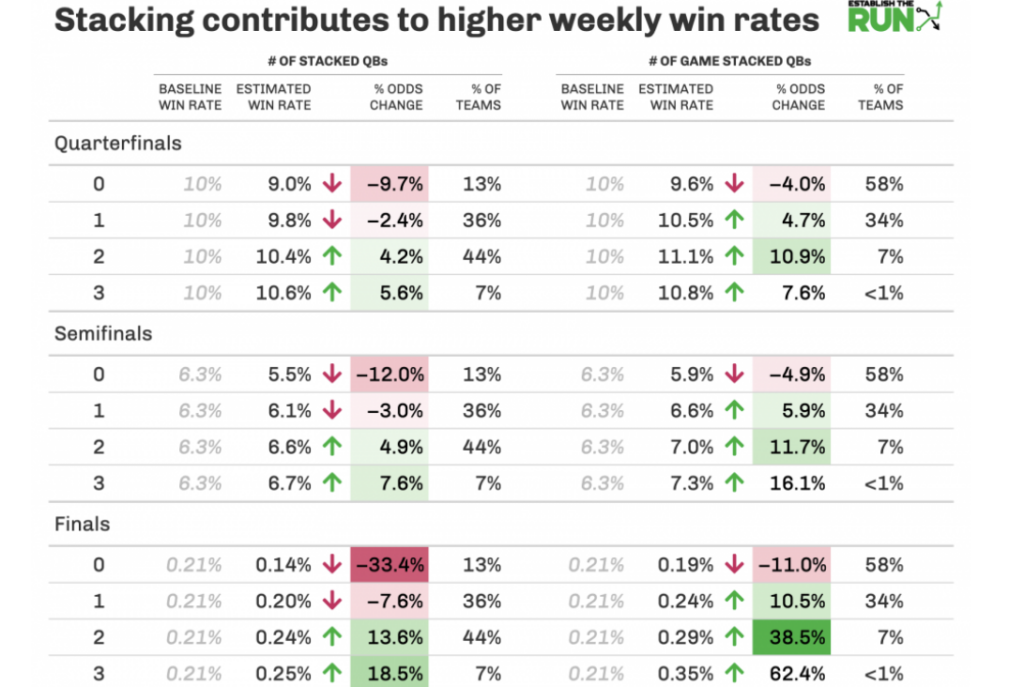
Here we see that in every stage of the BBM playoffs, teams that utilized team stacking, as well as game stacking (to be discussed shortly), increase their win rate by a significant margin.
At the end of the day, we need to be doing everything we can to gain an edge on the field in order to win these tournaments. Utilizing stacking in lineups is one of the clearest ways to gain an edge by reducing the amount of things we “need to get right.”
Best Ball Strategy Number Two: Game Stacking
Another concept is called game stacking. This is the idea of adding players from the opponent of one of your team stacks, in hopes of catching a high-scoring affair that create a fertile fantasy environment. If one offense does well, the other will be at least pushed to keep up, and ideally the two teams are trading back-and-forth blows while your teams rack up the fantasy points.
The most successful DFS players use game-stacking all the time. It’s often referred to as a “bring-back,” and it makes perfect sense. Just like team-stacking, game-stacking once again reduces the amount of things we need to get right. If we draft 4+ players within the right environment, we increase our chances substantially.
Best Ball players have started to catch on, and as you’ll see shortly, last year’s $3,000,000 winner (and the previous year’s $2Mil champ) both utilized team and game-stacking to perfection.
The Cowboys face off against the Philadelphia Eagles in Week 17 this season. So adding a combination of one or two offensive weapons from Philadelphia to a roster that has a Cowboys team stack would be an example of a Week 17 game stack.
Here’s a look at the Week 16 and 17 schedules. Using a resource like this in drafts is essential to ensure that your roster has correlation in Weeks 16 and 17.
My initial thoughts on the fantasy environments for Week 16 & 17 matchups. Considers offensive environment and potential weather
— Michael O’Hara (@MOH_FFB) May 16, 2024
This is something that I will be looking to when drafting my Best Ball teams
“Winners”
– SF
– DET
– DAL
-HOU
-WAS
“Losers”
– BUF
– MIA (W17)
-LAC pic.twitter.com/fZJo1zpqvE
In this Tweet, I have broken down these matchups into tiers. However, don’t utilize these tiers to attack the “high-end” matchups too aggressively. There is a lot of chaos that goes on in the NFL prior to Week 17, so we don’t know which matchups will be truly fantasy friendly until we actually make it to Week 17.
We can’t predict or control which stars will be injured, which defenses will regress both positively and negatively, which offenses may explode or disappoint. We certainly can’t predict the Week 17 weather.
We can, however, bank on talent. As such, we want to target the players we feel strongly about in the early stages of the draft, and not “over-react” or “force” players in because we think their Week 17 matchup may be positive or negative.
For example, some people are bumping down Tyreek Hill in there Best Ball Rankings due to a perceived bad matchup with Cleveland. Sure, the Browns’ secondary is strong. Yes, the weather could be bad. Still, what if Denzel Ward goes down, and we get an unseasonably warm game?
As such, bet on talent early, and then work in the Week 17 team and game-level correlation later. Plus, make sure you are working in game stacks from all of the Week 17 matchups across your drafts– the ugly-looking matchups often end up being the craziest.
As previously mentioned, optimizing for Week 16 is also important for BBMV. While should prioritize Week 17, working in Week 16 correlation can only help increase your odds of making the big dance. Back to our Cowboys, they square off against the Tampa Bay Buccaneers in Week 16. Working in weapons from the Tampa Bay offense would provide some correlation for the Cowboy’s Week 16 matchup — a CeeDee Lamb and Mike Evans start makes a ton of sense, and is very doable.
While the logic behind game-stacking may be intuitive, it doesn’t hurt to see that it’s backed up by data, here provided by Justin Freeman of Run the Sims.

This data shows that a flex player (WR/RB/TE) outscores their projection by 10 or more points at a 12.8 percent rate in any given week. However, when a flex player is the opponent of a QB that scores 30+ fantasy points, they outscore their projection by 10+ points at a 20.8 percent clip.
Developing team stacks and then taking on weapons from the opposing offense is clearly one of the best strategies to optimize lineups for Week 17. But don’t forget that in BBMV, drafting game stacks for Week 16 is also important, although not as important as Week 17.
Best Ball Strategy Number Three: Back-Weighted Production
In order to win these Best Ball tournaments, we want our teams to be firing on all cylinders during the fantasy playoffs. But how do we do that? We can do this by finding players with back-weighted production.
This simply means that we should draft players who are going to be performing at their best down the stretch of the season. As previously discussed, these final weeks are where the money is, so we want our players to peak in the most crucial times.
This back-weighted production most commonly comes in two forms:
A) Rookies
Rookies are less likely to perform early in the season, as many don’t have the opportunity to make an impact, or they may take a bit to adjust to the NFL speed and complexity.
However, as they become acclimated to the NFL and/or veterans aren’t performing up to their coaches’ standards, rookies see the field more and make bigger impacts. Often, we see coaches scheme increased usage for rookies during Bye Weeks, as the rookie proves to have the playbook down.
A great example of this is Rashee Rice. Early in 2023, Rice was a rotational player for the Chiefs and didn’t have much of a fantasy impact. But as the season progressed, Rice surpassed the washed-up veterans in the Chiefs WR room, earned a full-time role, and was a significant contributor on fantasy rosters down the stretch. Jaydeen Reed similarly launched his Best Ball managers to the stratosphere when his role grew by midseason.
In 2024, people are waking up to rookies, with their ADPs as high as ever. Still, plenty of strong Later Round Rookie WRs exist to be that “Next Rice or Reed.” WRs that could fit this bill include Roman Wilson, Jermaine Burton, and Ja’Lynn Polk in the 140-160 range. Malachi Corley, Javon Baker, and Jalen McMillan also fit the bill in the 180-200+ pick range as well.
The best part? Rookies aren’t limited to just back-weighted production. Look at Puka Nacua, who set rookie records in the first two weeks, and only continued to steam forward when you needed him most.
While you won’t always hit home runs, history suggests rookie swings are highly worthwhile.
B) Handcuffs / Contingent Value
Back-weighted production can also be found by drafting “handcuffs”, especially at RB. This is not just in the sense of a traditional handcuff in which you draft an RB with some strong upside if the starter goes down (though this is still viable).
You can also draft the RB2 on a team with a suspect RB1. Last season, two prime examples of this were Chuba Hubbard and Devin Singletary. Both of these players started out the year as backups, but as the season progressed, they surpassed the “RB1” on their team (Miles Sanders and Dameon Pierce) to become the starter. When the fantasy playoffs rolled around and production from your lineup mattered the most, both Hubbard and Singletary were in full control of their backfields.
In 2024, some murky-but-intriguing backfields include the Bengals, Raiders, Giants, and Broncos. Chase Brown, Tyrone Tracey, Dylan Laube, and Audric Estime may all be backups to begin the season, but none face impossible roadblocks to a starting role if they outperform the meh starters ahead of them.
Meanwhile, guys like Blake Corum, Jaylen Wright, Marshawn Lloyd, Tyler Allgeir, and Ty Chandler all profile as strong talents who could be Top-12 RBs if the starter ahead of them goes down. While they may provide next-to-nothing otherwise, these guys could be huge injections to playoff runs if the injury bug strikes at the right time (for your team, of course).
Stacking Strategies in Practice
You’ve just been hit with a bunch of Best Ball drafting strategies and some data to back up these strategies. But are successful Best Ball teams and drafters actually utilizing these strategies? The short answer is yes.
Someone slap me to wake me up from this dream. I consumed countless hours of content from @PatKerrane @ChessLiam @peteroverzet but my favorite is @Socrdave who taught me to live a little. Definitely max this tourney if you can. Super fun to draft along with you guys. pic.twitter.com/2GgI0SEyTf
— Farid Shaheed (@pantherraonca) January 1, 2024
Last year’s BBMIV champion Farid Shaheed had a lineup that consisted of a Green Bay Packers team stack (Jordan Love, Jayden Reed, and Christian Watson). Reed and the Green Bay offense also had tremendous back-weighted production, hitting their stride during the fantasy playoffs.
Shaheed utilized game stacking by working in Alexander Mattison to correlate with his Packers stack. He also had an additional game stack of Detroit vs. Dallas, drafting CeeDee Lamb and Amon-Ra St. Brown.
Two years ago, Pat Kerrane’s winning lineup in BBMIII featured three different game stacks. A whopping 12 of his 18 players came from just three different games in Week 17, which featured, Tampa Bay-Carolina and Miami-New England stacks. This subtly also illustrates that the “stack you need” might not be the “sexiest” on the preseason paper, either.

These guys are both BBM champions and multi-millionaires. The results of team stacking, game stacking, and finding players with back-weighted production speak for themselves.
Will you follow the best practices to stuff your own pockets?
A Word of Caution: Don’t Force Stacks
Stacking is a crucial part of developing rosters that both advance to the playoffs as well perform well in the playoffs. It is ok to disregard ADP and “reach” to complete stacks on your roster.
However, don’t let this get out of hand and take players significantly ahead of ADP, especially in early rounds. Looking back to our example of a Cowboys stack, if you start a draft with CeeDee Lamb, it would be nice to finish a stack with Dak. Prescott currently has an ADP of 87. Reaching on Dak in the range of pick 80 would be perfectly acceptable to complete your stack. Don’t get too aggressive though, grabbing Dak at pick 70 would be sacrificing too much ADP value.
In the later rounds though, reaching 10-20 spots ahead of ADP to complete stacks (or even just get players that you like) is acceptable. This is because, in the later rounds, the difference in value between individual picks is much less significant.
For example, pick 10 in Best Ball drafts is currently AJ Brown and pick 30 is currently Michael Pittman. Pick 130 is Jahan Dotson while pick 150 is Darnell Mooney. These are both gaps of 20 picks in ADP but the difference in value between Brown and Pittman is much more significant than Dotson and Mooney.
If you’ve ever played in an auction draft, framing it with those values in mind can be helpful, too. By the end of the draft, nearly all Round 12+ players are going for $1-$2. Yet, those Round 1-2 players are all going for $50-60+, while Round 3-4 guys typically drop to the $20-30 range.
In short, it is ok to reach on players to complete stacks, especially in later rounds when differences in ADP are much less significant. But don’t go crazy and try to stay reasonable. Don’t let it impact your pre-draft player takes, and don’t pass up on any absurd values falling to you just for the sake of a stack.
Rather, use Week 17 correlation as an important tie breaker and in-draft guide, and you’ll be setting yourself up for when it matters most.
If you haven’t tried Underdog Fantasy yet… what are you waiting for?! Now is the perfect time to join, with up to $250 Bonus Cash with code RSJ or by clicking this link!
